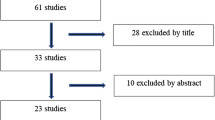Abstract
This article studies the incidence and magnitude of delayed callus subsidence, which will also help in study the hypothesis of three cortex corticalisation to determine the time of fixator removal during distraction osteogenesis (DO). Eighty-one tibia segments with mean lengthening of 7.7 ± 2.9 cm were studied with age, gender, skeletal maturity, amount and percentage of lengthening, callus pattern, callus shape, number of cortices seen at the time of fixator removal, bone mineral density (BMD) ratio, and callus diameter ratio analysed for their effect on callus subsidence. All segments had tibia callus subsidence ranging from 4 mm to 3.2 cm with 54% having significant subsidence of more than 1 cm. Multivariate regression analysis revealed only the amount of lengthening and callus patterns to be significant. In conclusion, we can say that tibia callus subsidence is a significant delayed complication and factors affecting it can be used to determine the time of fixator removal.
Résumé
Le but de ce travail est d’évaluer l’importance du régénérat et de vérifier l’hypothèse selon laquelle il est nécessaire d’avoir une corticalisation des 3 corticales avant d’enlever le fixateur lors d’allongements de membres. 81 tibias ont été allongés en moyenne de 7.7 à 2.9 cm et analysés en fonction de l’âge, du sexe, de la maturité squelettique et du pourcentage d’allongement, de même en ce qui concerne l’évaluation du cal et le nombre de corticales consolidées au moment de l’ablation du fixateur. Nous avons également réalisé une étude densitométrique (BMD). Tous les régérats osseux, au niveau du tibia, avaient un écart au niveau du cal osseux de 4 mm à 3,2 cm, 54% ayant un écart de plus d’1 cm. L’analyse statistique a montré que les facteurs significatifs étaient surtout dûs à l’importance de l’allongement. En conclusion, dans l’allongement du tibia,nous pouvons affirmer que l’aspect du régénérat est un facteur important qui doit être pris en compte pour déterminer le moment de l’ablation du fixateur.

Similar content being viewed by others
References
Aldegheri R, Renzi-Brivio L, Agostini S (1989) The callotasis method of limb lengthening. Clin Orthop Relat Res 241:137–145
Aldegheri R (1999) Distraction osteogenesis for lengthening of the tibia in patients who have limb-length discrepancy or short stature. J Bone Joint Surg [Am] 81:624–634
Antoci V, Ono CM, Antoci V Jr, Raney EM (2006) Bone lengthening in children: how to predict the complications rate and complexity? J Pediatr Orthop 26(5):634–640
Aronson J, Good B, Stewart C, Harrison B, Harp J (1990) Preliminary studies of mineralization during distraction osteogenesis. Clin Orthop Relat Res 250:43–49
Aronson J, Gao GG, Shen XC, McLaren SG, Skinner RA, Badger TM, Lumpkin CK Jr (2001) The effect of aging on distraction osteogenesis in the rat. J Orthop Res 19(3):421–427
Vargas Barreto B, Caton J, Merabet Z, Panisset JC, Pracros JP (2007) Complications of Ilizarov leg lengthening: a comparative study between patients with leg length discrepancy and short stature. Int Orthop 31:587–591
Catagni MA, Lovisetti L, Guerreschi F, Combi A, Ottaviani G (2005) Cosmetic bilateral leg lengthening: experience of 54 cases. J Bone Joint Surg [Br] 87(10):1402–1405
Codivilla A (1905) On the means of lengthening, in the lower limbs, the muscles and tissues which are shortened through deformity. Am J Orthop Surg 2:353–369
Dahl MT, Gulli B, Berg T (1994) Complications of limb lengthening: a learning curve. Clin Orthop Relat Res 301:10–18
Donnan LT, Saleh M, Rigby AS, McAndrew A (2002) A radiographic assessment of bone formation in tibia during distraction osteogenesis. J Pediatr Orthop 22(5):645–651
Fischgrund J, Paley D, Suter C (1994) Variables affecting time to bone healing during limb lengthening. Clin Orthop Relat Res 301:31–37
Gross RH (1971) An evaluation of tibial lengthening procedures. J Bone Joint Surg [Am] 53(4):693–700
Hamanishi C, Yasuwaki Y, Kikuchi H, Tanaka S, Tamura K (1992) Classification of the callus in limb lengthening. Radiographic study of 35 limbs. Acta Orthop Scand 63(4):430–433
Harp JH, Aronson J, Hollis M (1994) Noninvasive determination of bone stiffness for distraction osteogenesis by quantitative computed tomography scans. Clin Orthop Relat Res 301:42–48
Ilizarov GA (1989) The tension-stress effect on the genesis and growth of tissues. Part I. The influence of stability of fixation and soft-tissue preservation. Clin Orthop Relat Res 238:249–281
Ilizarov GA (1989) The tension-stress effect on the genesis and growth of tissues: part II. The influence of the rate and frequency of distraction. Clin Orthop Relat Res 239:263–285
Ilizarov GA (1990) Clinical application of the tension-stress effect for limb lengthening. Clin Orthop Relat Res 250:8–26
Kawamura B, Hosono S, Takahashi T, Yano T, Kobayashi Y, Shibata N, Shinoda Y (1968) Limb lengthening by means of subcutaneous osteotomy. Experimental and clinical studies. J Bone Joint Surg [Am] 50-A:851–878
Li R, Saleh M, Yang L, Coulton L (2006) Radiographic classification of osteogenesis during bone distraction. J Orthop Res 24(3):339–347
Maffulli N, Lombari C, Matarazzo L, Nele U, Pagnotta G, Fixsen JA (1996) A review of 240 patients undergoing distraction osteogenesis for congenital post-traumatic or postinfective lower limb length discrepancy. J Am Coll Surg 182(5):394–402
Mamada K, Nakamura K, Matsushita T, Okazaki H, Shiro R, Ou W, Tanaka K, Kurokawa T (1998) The diameter of callus in leg lengthening: 28 tibial lengthenings in 14 patients with achondroplasia. Acta Orthop Scand 69(3):306–310
Noonan KJ, Leyes M, Forriol F, Canadell J (1998) Distraction osteogenesis of the lower extremity with use of monolateral external fixation. A study of two hundred and sixty-one femora and tibiae. J Bone Joint Surg [Am] 80(6):793–806
Paley D (1990) Problems, obstacles, and complications of limb lengthening by the Ilizarov technique. Clin Orthop Relat Res 250:81–104
Author information
Authors and Affiliations
Corresponding author
Rights and permissions
About this article
Cite this article
Shyam, A.K., Singh, S., Modi, H.N. et al. Leg lengthening by distraction osteogenesis using the Ilizarov apparatus: a novel concept of tibia callus subsidence and its influencing factors. International Orthopaedics (SICOT) 33, 1753–1759 (2009). https://doi.org/10.1007/s00264-008-0660-6
Received:
Revised:
Accepted:
Published:
Issue Date:
DOI: https://doi.org/10.1007/s00264-008-0660-6




